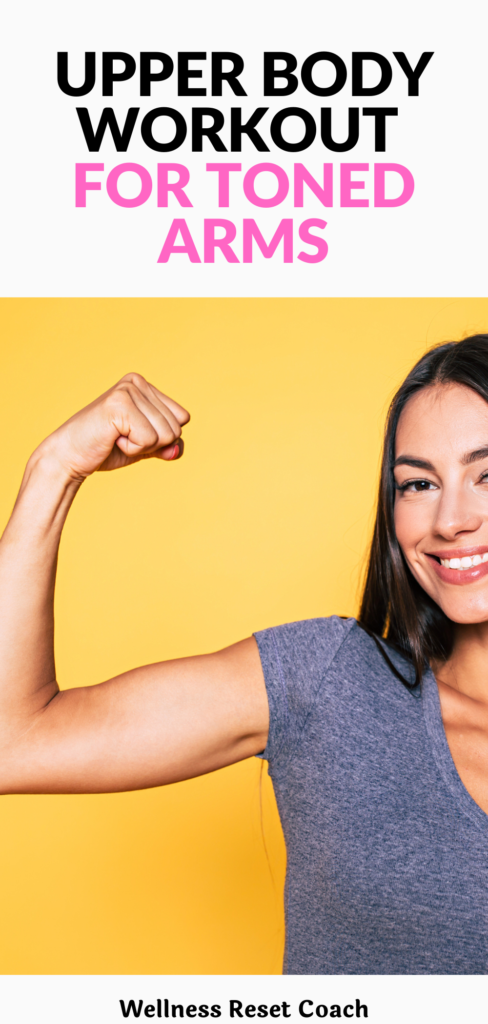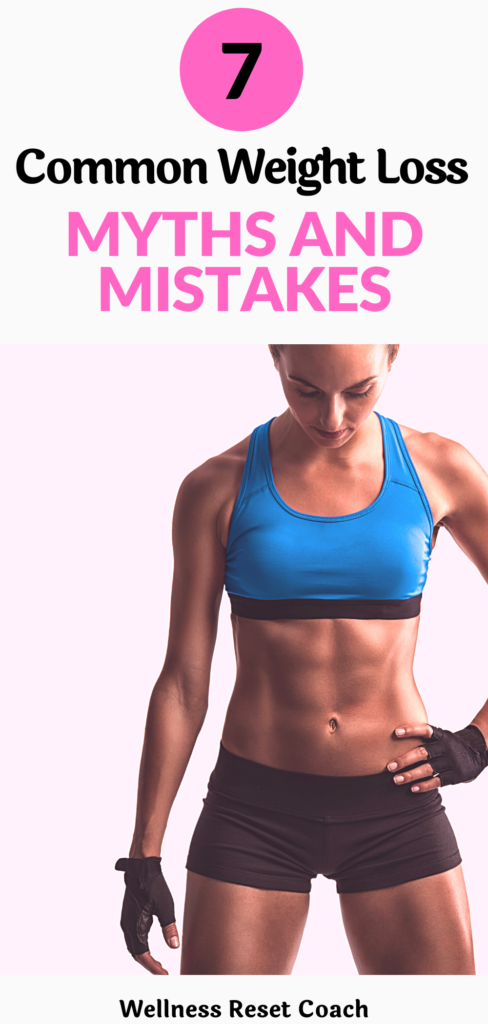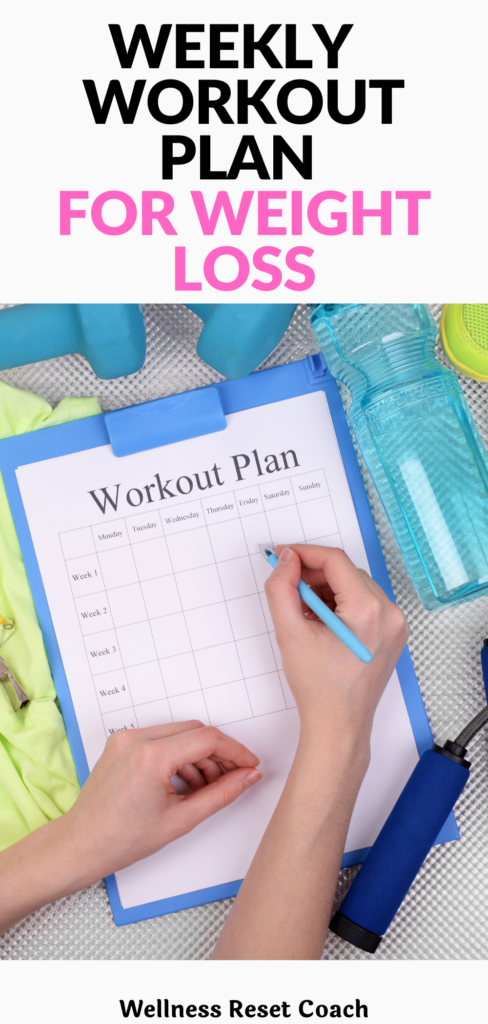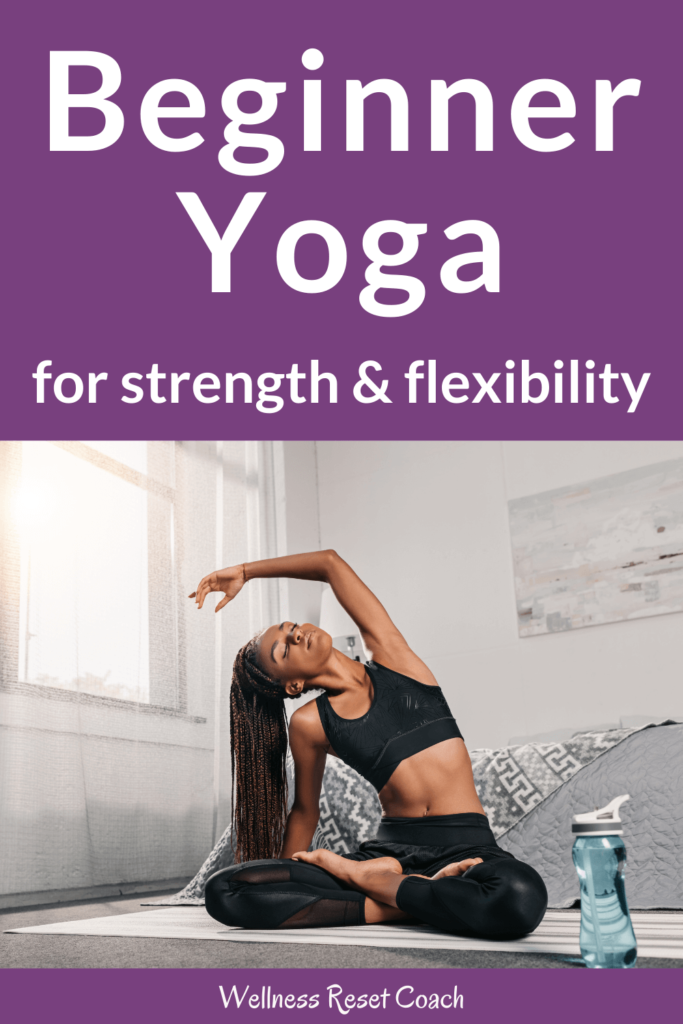

By Cealia Brannan
Yoga plays with opposites like strength and flexibility. When you practice beginner yoga for strength, it brings a new awareness to the relationship of opposites.
For example yoga:
- Helps students become both stronger and more flexible.
- Brings a sense of effort as well as ease.
- Embodies holding on while letting go.
- Pushes the limits while accepting what is.
It’s this beautiful relationship between opposites that meet students where they are in body and mind. Sounds like a win-win, right?
For beginner yogis, the practice typically centers around the body and the effects yoga has physically.
You’ll not only feel stronger but more open and flexible. Pretty soon yoga will become an addiction.
Many foundational yoga postures have an amazing way of progressing with you, and your strength and flexibility improves in a healthy and sustainable way for the duration of the time you spend practicing––and even well after.
Let’s get into how this works and how you can incorporate yoga into your daily life for both strength and flexibility.
Related Reading: Top 11 Benefits of Yoga
Beginner Yoga for Strength
Don’t let it fool you! Yoga is not just about stretching, recovery and meditation.
Many yoga postures dig into specific muscles and develop strength in a different way than your typical gym workout.
It doesn’t even have to be a power class to activate and tire your muscles. Slower paced classes with longer holds will improve your strength as well.
As you get into a yoga practice, these are some of the most foundational, strength-building poses to incorporate as much as you’d like:
Foundational beginner yoga for strength poses
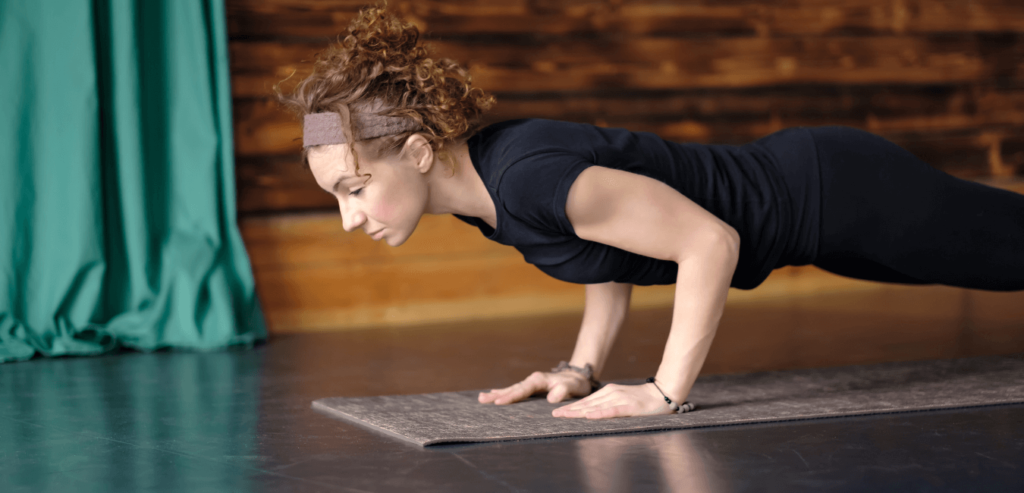

Warrior 1
Squared hips, a grounded back heel, strong arms and a focused forward gaze are key aspects of this posture.
As you get into this pose, shoulders stay neutral, fingertips extend, back leg straightens and front knee bends.
Once you arrive in the pose, begin to relax the effort slightly so that your body feels abundant in the position and not stressed or rigid.
Even breathing in and out through the nose helps calm the mind and body, while also sending oxygen where you need it most.
Warrior 2
This warrior involves opening the hips and aligning the front heel with the arch of the back foot, deepening the bend in the front knee and moving the arms to reach strongly both forward and back through active fingers.
Keeping a steady gaze forward and a grounded sensation through the base of the spine will bring on a centered, but powerful, feeling.
Reverse Warrior
A beautiful follow-up pose to Warrior 2 is Reverse Warrior.
This posture brings on a yummy side stretch by lowering your back hand to your back thigh and extending your front arm up by your ear.
Gaze upward and enjoy breathing deeply into this side bend.
Warrior 3
This powerful pose can follow Warrior 1 for a strong and fluid entry.
From Warrior 1, send weight forward into the front foot and lift the back leg until your front leg can straighten and your fingertips and back toes are in a line.
Dig into your standing foot and glute muscles to keep your balance.
High Crescent Lunge
This lunge is often an amazing place to start a standing flow.
Hips are squared like headlights toward the top of your mat, the back heel is lifted and pressing forward to align above the toes, arms are extended actively upward and the front knee is bent to engage thigh muscles.
Gaze straight ahead or slightly upward for an energetic feel. Transitions into any Warrior pose flow smoothly from this lunge.
Extended Side Angle
Another fluid transition from Warrior 2, Extended Side Angle gets deeper into the hips and the front thigh, while reaching the front arm down to the mat inside the front foot or lightly resting the front arm along the front thigh.
The back arm reaches upward first and then rotates through the shoulder to extend strongly along the side of the head.
Picture a long line from your back heel to your hip and from your hip to your extended fingertips.
Chair Pose
Chair pose is a classic member of Sun Salutation B, which is a foundational warm up sequence.
This pose brings the big toes and knees together, heels slightly apart, and bends into the thighs.
The tailbone tucks under gently and the spine elongates through the crown of the head with arms stretched up by the ears.
Play with twisting here and transitioning into Eagle Pose or Warrior 3.
Chaturanga
The yogi push up. This pose can be difficult to learn at first, but it can also become a strength-y and flowy favorite in no time.
It’s a classic pose in Vinyasa yoga when flowing back to Downward Facing Dog.
Think of it as a tricep push up where you pause with elbows directly in line with the shoulders and at a right angle to your hands.
From here, pressing up into an Upward Facing Dog is typically the next step (and brings relief that’s oh-so good).
Beginner Yoga for Flexibility
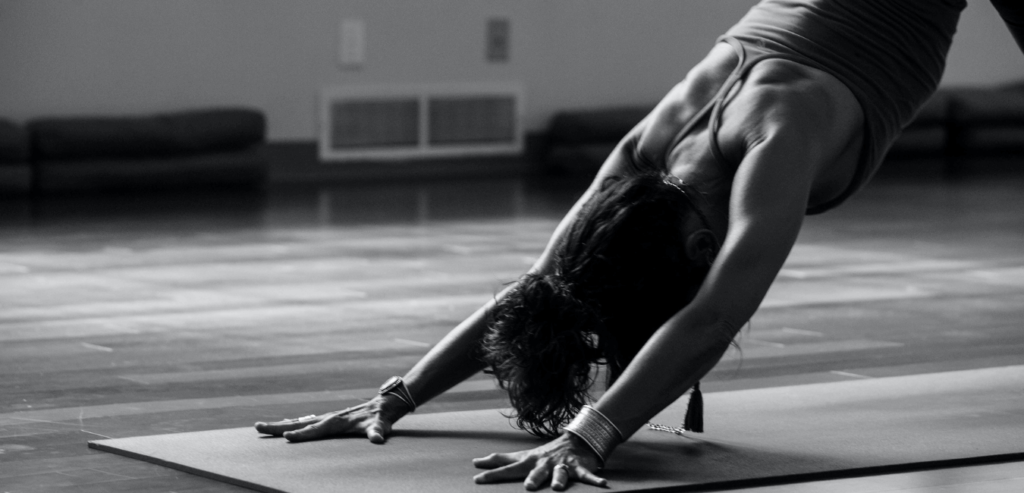

Flexibility can be a journey all on its own, requiring consistency, focused effort and time.
When practicing beginner yoga for strength consistently, it becomes a steady progression with overall results that slowly happen over time.
As you practice, your body will feel more and more open and free in all areas, but especially in the extra-tight or ‘sticky’ areas.
Think: hips, hamstrings, low back and shoulders.
The approachable and key postures listed below will ease your body into a more flexible place.
Enjoy weaving them into your daily practice and watch (or feel) the magic happen!
Foundational flexibility poses
Downward Facing Dog
Perhaps the most well-known yoga pose out there, Downward Facing Dog hits all the hot spots––hamstrings, calves, back, chest and shoulders.
Keep in mind that this pose is actually a lower body pose, taking the weight and energy out of the arms and wrists and sending it up and back into the hips and finally down into the heels.
It can be difficult to get the form right at first, but as you practice, it will come.
Standing Forward Fold
This ‘touch-your-toes’ pose creates length in the hamstrings and brings space into the spine.
Feel empowered to bend your knees as much as you need to at first. It’s all about meeting your body where it is and finding your own optimal stretch.
As you lengthen through the spine, hinge right at the hips. Because this will help you get further into a Forward Fold.
Upward Facing Dog
The pose that typically follows chaturanga brings with it chest-opening, spine-stretching and elongating hip flexor goodness.
Keeping the shoulders down and away from the ears, arms straight and strong and chest pressing forward through the arms.
Bring a lift into the legs by pressing the tops of the feet into the mat and flexing the quadriceps slightly to increase the stretch.
Pyramid Pose
This pose gets into those hamstrings with two straight legs about 3 feet apart and at hip-width distance.
The back heel roots into the mat, and a slow fold toward the front leg with a lengthened spine deepens the stretch sensation.
Take it slow and keep pulling the back hip forward and pressing the front hip back.
Triangle Pose
Similar to Pyramid Pose, Triangle Pose involves straightening both legs with several feet of space between them.
Open up the hips while the feet are aligned and body weight is pressing into the back hip.
As your arms are in Warrior 2, hinge forward until your front fingertips rest on the mat inside the front leg, extend the chest and reach the other arm upward.
Crescent Moon Lunge
From a low lunge position, drop the back knee down and lean into the hips. Tone the inner thighs and reach the arms up by the ears.
Add a backbend by sinking further into the hips, lifting the chest and tucking shoulder blades behind the heart.
Pigeon Pose
From Downward Facing Dog, bring one leg forward and rest the shin behind your wrists.
Try to keep the hips squared forward and the front wider than the front hip.
Stretch the back leg out long and gently press into the top of the foot.
Bound Angle
From a seated position, bring the soles of the feet together and pull them in toward your hips. Knees are wide, and spine is straight.
Bring your hands to your feet, and slowly hinge forward to fold at the hips. At the end of your fold, gently relax through the head, neck and upper back.
Beginner Yoga Sequence for Strength and Flexibility
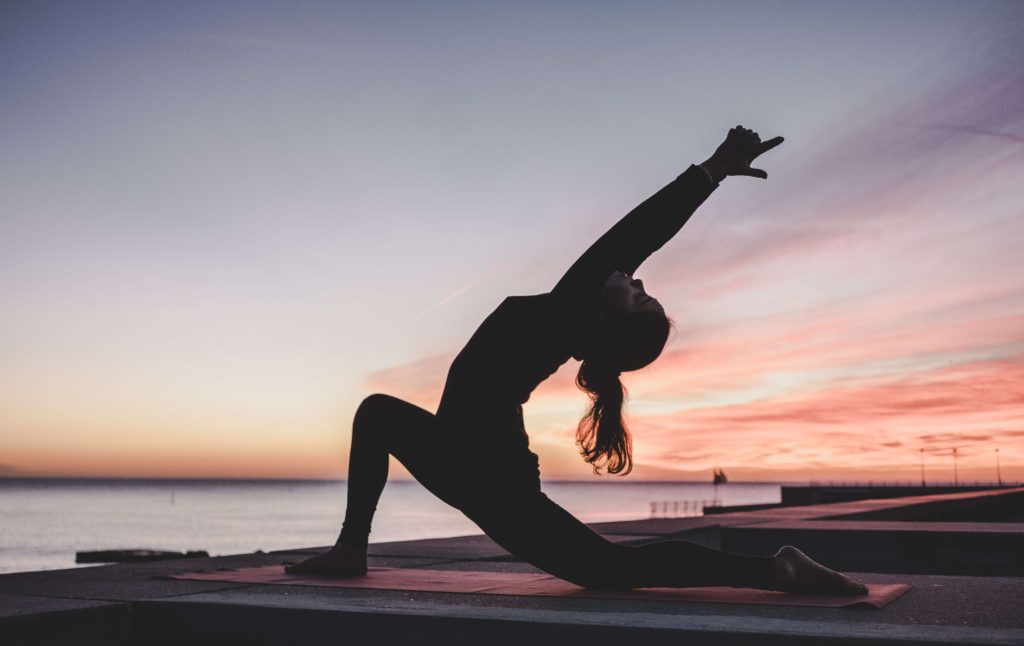

Here’s a great sequence to bring all the poses together in a daily flow that can be made as long or short as you’d like!
Simply, repeat any of the sequences as many times as you’d like––just make sure you’re even on both sides.
- Warm up
Sun salutations A and B: Take your time with this sequence of postures to warm through the body.
- Sequence 1
High Crescent Lunge to Warrior 2, Triangle Pose, Extended Side Angle Pose, Runners Lunge
Transition with Vinyasa: Once you’ve gone through this small sequence a few times, it becomes intuitive.
- Repeat on the other side
- Sequence 2
Warrior 1 to Pyramid Pose, Warrior 3, Chair Pose, Forward Fold
Vinyasa
- Repeat on the other side
- Cool down and stretch:
Pigeon pose to bound angle
- Move back to Downward Facing Dog
(Repeat on the other side.)
- Final Relaxation: Seated Forward Fold to Savasana
Leave us a comment, and let us know how your practice goes!

